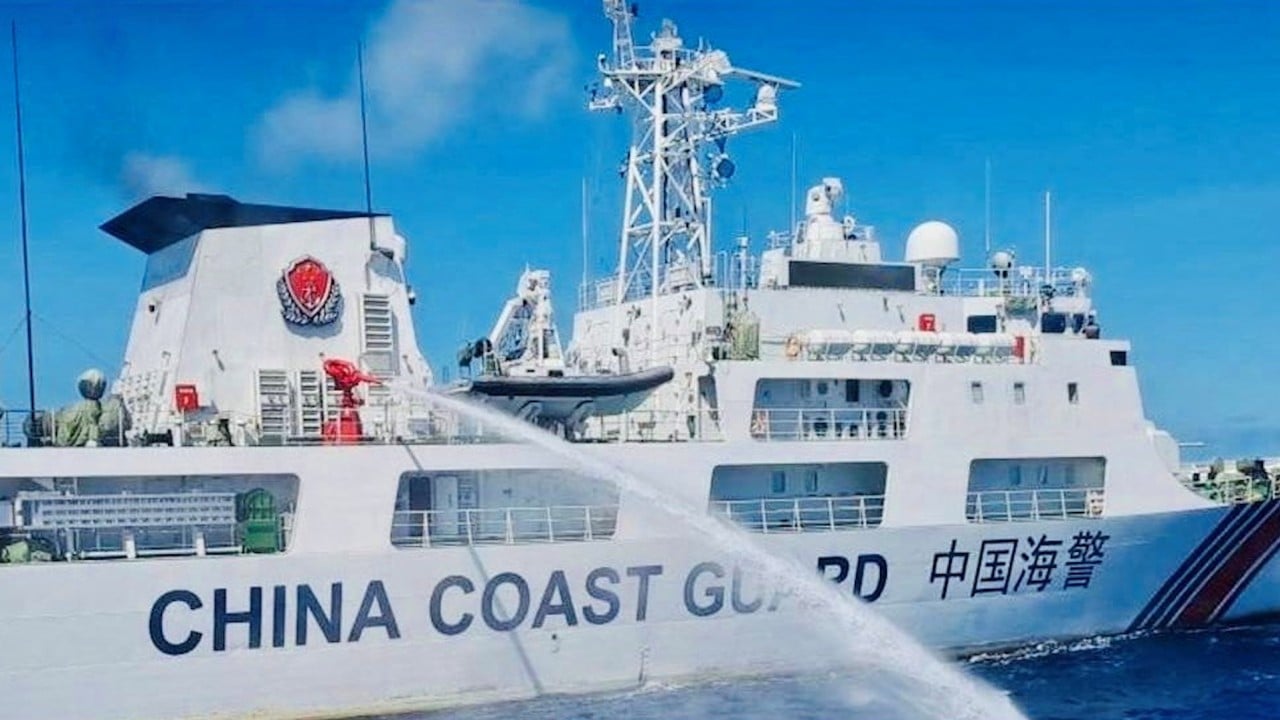
How a submerged Spratlys reef is emerging as a South China Sea flashpoint for China, the Philippines and US
- Pressure is building on the US to step in at the Philippine-occupied Second Thomas Shoal with the Chinese increasingly brazen and Manila increasingly indignant
- By being ambiguous, the US seems to be counting on the Philippines not to escalate the situation or China to back down – increasing the risks of miscalculation

Clearly, China’s claim over Second Thomas Shoal and its recent action there violate UNCLOS and are thus contrary to the international order the US leads and vows to enforce. Indeed, China’s actions are an “in your face” provocation to the Philippines, the US and international rules.
The US pointed this out in its statement: “The United States stands with our Philippine allies in the face of dangerous actions by the coastguard and maritime militia of the People’s Republic of China (PRC) to obstruct an August 5 Philippine resupply mission to Second Thomas Shoal in the South China Sea. Firing water cannons and employing unsafe blocking manoeuvres, PRC ships interfered with the Philippines’ lawful exercise of high seas freedom of navigation and jeopardised the safety of the Philippine vessels and crew.”
This time, the US appears to be going a bit further in its support of the Philippines. According to a Nikkei report, Admiral Samuel Paparo, commander of the US Indo-Pacific fleet, said the US was prepared to help if China interferes with Manila’s efforts to resupply troops at Second Thomas Shoal. “We stand ready to come to the Philippines’ assistance, in their exercise of their sovereign rights,” he said.
The Philippines may indeed ask the US to get involved militarily in a future incident. And, of course, the US has wiggle room under the mutual defence treaty in defining what constitutes an “armed attack” on a Philippine “government vessel”, and what US action is then required. But if it prevaricates after its warnings in this incident, it will seem a toothless tiger.
The US appears to have brought itself to the brink and left the next move in the hands of the Philippines and China. Warmongers are calling for America to back up its words with action. Ambiguity can be a deterrent but it also carries risks of miscalculation.
Ironically, by being ambiguous, the US may have encouraged the Philippine military to up the ante. It seems to be counting on the Philippines not to escalate the situation, or if it does, on China to back down because of the US threat.
It is time for the US to clarify to the Philippine government in no uncertain terms that if it provokes China into an armed clash, it may be on its own. Meanwhile, risks of a showdown at Second Thomas Shoal continue to rise.
Mark J. Valencia is a non-resident senior research fellow at the Huayang Institute for Maritime Cooperation and Ocean Governance



